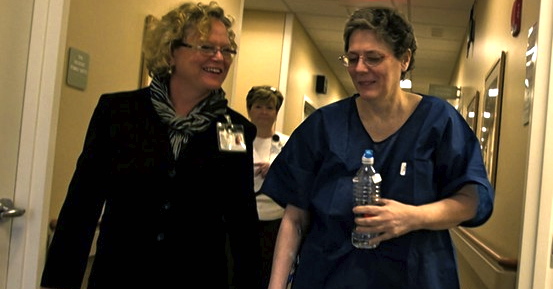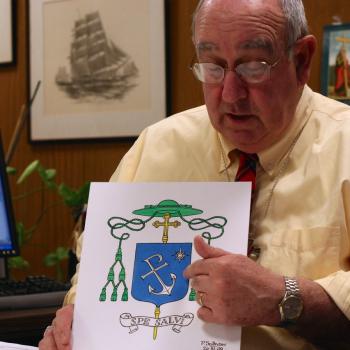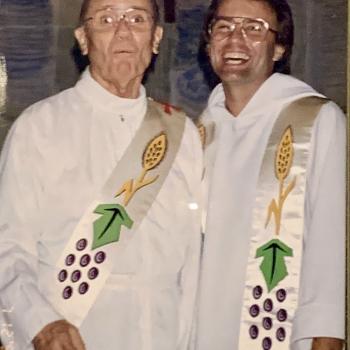She’s the widow of a classmate of mine, Jim Hynes, and her story begins this report in the Wall Street Journal about how spiritual care is increasingly a part of health care:
Doctors and nurses were preparing Kathleen Hynes for a stem-cell transplant at Long Island’s North Shore University Hospital last June when she asked them to page another member of the medical team—hospital chaplain Kimberli Lile.
Ms. Hynes, a 53-year old cancer patient, wanted the chaplain to bless the cells before they were administered intravenously.
Hospital chaplains have long been a source of comfort and succor for patients facing daunting illness.
Chaplains are seeking bigger roles in hospitals and in some cases joining the medical-care team, as new research shows positive spiritual guidance and discussion can help improve a patient’s medical outcome.
Some hospitals are giving patients questionnaires upon admittance to identify who may benefit most from chaplain referrals.
Chaplains, of course, may still pray with patients regardless of denomination, help families make difficult end-of-life decisions or simply offer a sympathetic ear.
As interest rises in the links between religion, spirituality and health, there is a new push to establish chaplaincy in the medical mainstream and apply more rigorous scientific research. The Association of Professional Chaplains, which certifies health-care chaplains, issued its first standards for practice in 2009, including the requirement that chaplains document their work in patient medical records and stay abreast of new research.
Medical schools are adding courses on spirituality and health, and training residents to consider patients’ spiritual needs. Some two-thirds of U.S. hospitals provide chaplaincy services; others rely on local clergy and lay volunteers…
…Ms. Hynes, a Catholic, had turned to her faith to help her cope with the 2008 death of her husband and the loss of her teaching job. After she was diagnosed with mantle cell lymphoma, a rare and often aggressive cancer, Rev. Lile helped Ms. Hynes face some of her fears, she recalls. “She gave me a beautiful prayer, and we sat and talked for an hour. She was so receptive and interested in what I was going through.”
The two spoke often during Ms. Hynes’s hospital stay, laughing over the notion that Rev. Lile, trained as a Lutheran minister, would be blessing Catholic holy water that Ms. Hynes’s son brought to the hospital for the stem-cell transplant.
After the transplant, Ms. Hynes wrote to Rev. Lile to express her thanks: “I feel so blessed to have your encouraging influence during this turning point in my life. . . . The beautiful prayer and blessing is a memory I will always carry with me.”
And before anyone brings it up: no, the stem cells she received were not embryonic stem cells. They were her own. And so far, the treatment has been a great success. Praise God!












